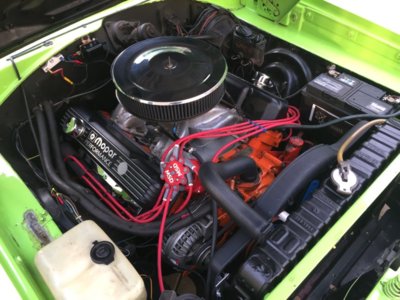I'm sure that I am not the only one that appreciates when a member pops in to give updates on their original topic.
I've had a few ballast resistors go bad. There is probably a way to test them though, right? I still have trouble with electrical stuff. I wish I knew someone nearby that could provide guidance so I could feel more confident with my skills.
A few weeks ago when I was tinkering with the Charger, it started running rough and backfiring as I tried to accelerate. It turned out to be the cracked ballast below:
View attachment 799625
After I replaced it, I had another go bad. I ran a jumper wire from one ballast wire to the other and when it ran better, I knew that the ballast was bad. The one above is one of 20 or so that I have in my stash out back. Most don't have an open view of the spring or whatever they use to bridge between each side. It is obvious that this one is AFU but what about the others with the stuff covering it?
I guess you use an ohmmeter?

















